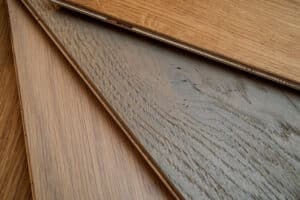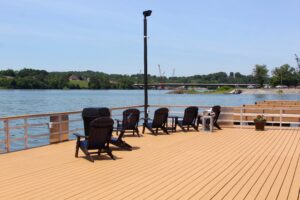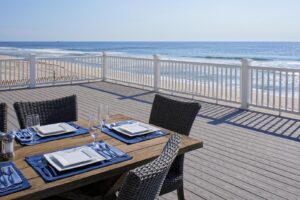When it comes to selecting hardwood lumber for your project, the choices can seem endless. Whether you are crafting fine furniture, installing durable flooring, using cabinets, or constructing custom cabinetry, the type of hardwood you choose will significantly impact the quality, aesthetics, and longevity of your work.
At Harbor Exports, we specialize in providing high-quality hardwood lumber and marine products sourced from the best suppliers worldwide. Our expertise in lumber exports ensures you receive the finest materials tailored to your needs. In this post, let’s walk through the most popular types of hardwood lumber and their best applications.
What Qualifies as Hardwood Lumber?
Hardwoods are usually from trees that grow in tropical climates. Unlike softwoods, hardwoods contain pores that efficiently move water throughout the wood rather than keeping water absorbed. These woods are naturally resistant to moisture, as well as rot, mold, algae growth, and marine boring pests. While hardwood structures are more expensive to install than softwood species, they can last much longer and require less maintenance in the long run.
Unlike softwoods, hardwoods tend to be denser, more durable, and highly sought after for premium construction and design projects. So hard, in fact, that most hardwoods require specialized tools, drill bits, and saw blades to work with!
Selecting the Best Hardwood for Your Construction Project
There are a few options you might have preferences on when selecting a hardwood species:
- Grain Pattern & Texture – Different hardwoods offer varied grain structures, from fine and uniform to bold and dramatic.
- Color & Aging Process – Some hardwoods darken over time, while others maintain a more consistent tone.
- Durability & Hardness – The Janka Hardness Scale measures a wood’s resistance to wear and denting.
- Workability – Some species are easier to cut, shape, and finish than others.
Popular Types of Hardwood Lumber
At Harbor Exports, we supply a wide range of hardwood lumber and marine construction products to meet the diverse needs of builders all around the world. In addition to domestic hardwoods, Harbor Exports provides a wide variety of exotic hardwoods that are prized for their distinctive colors, grain patterns, and natural resistance to wear.
Here are some of our best-selling varieties, which also happen to be our favorite exotic hardwoods!
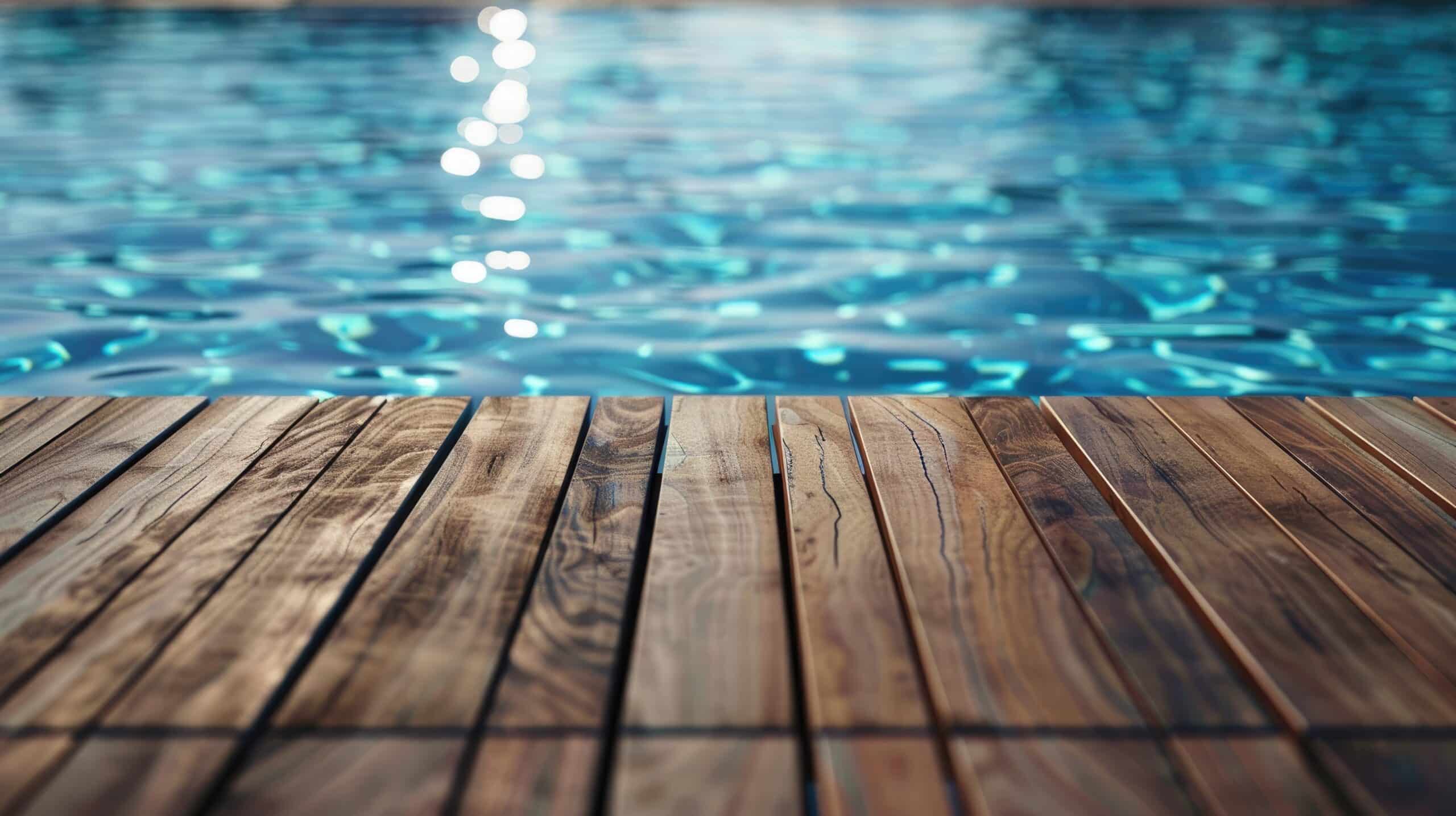
Ipe (Brazilian Walnut)
Ipe, also known as Brazilian Walnut, is a premium tropical hardwood sourced straight from the lush forests of South America. Recognized as the hardest of all tropical woods, Ipe boasts exceptional strength and longevity, making it a preferred material for high-end construction projects. Its natural oils create an impenetrable barrier against insects, decay, and other forms of deterioration, ensuring lasting beauty and performance.
Due to its remarkable strength and resilience, Ipe is the material of choice for outdoor decking for both residential and commercial properties, high-traffic areas like boardwalks due to its superior wear resistance, and heavy-duty flooring for long-lasting durability.
Advantages of Ipe
- Unmatched Durability – With a Janka hardness rating of 3,680, Ipe is one of the most resilient hardwoods available.
- Weather & Water Resistance – Naturally resistant to water, including seawater, Ipe remains stable even in humid and coastal environments.
- Scratch & Splinter-Free – Unlike many other hardwoods, Ipe resists scratching and splintering, providing a smooth and safe surface for outdoor spaces.
- Cool Under Sunlight – Ipe remains cooler under direct sunlight, making it ideal for outdoor applications involving bare feet.
Appearance & Maintenance
- Color & Grain – Dark brown with subtle grain variations, adding elegance to any structure.
- Maintenance Tip – To preserve its rich color, regular application of oil is recommended, which also enhances UV protection and prevents graying over time.
Cumaru: The Affordable Alternative to Ipe
Cumaru, often called Brazilian Teak, offers Ipe-like durability at a more affordable price. Cumaru is an excellent choice for large projects requiring strength and longevity, including boardwalks, beachside decking, and high-traffic flooring. Cumaru is also a favorite choice for beach projects because it has a lifespan of over 50 years!
Advantages of Cumaru
- Durable & Resistant to Insects & Mildew – Stands up to coastal environments.
- Mid-Tier Pricing – A cost-effective alternative to Ipe.
- Rich Brown Color – Available in warm and slightly cool tones.

Teak
Teak is renowned for its exceptional water resistance, making it a top choice for marine applications and outdoor use. Thanks to its natural oils, Teak resists rot, insects, and UV damage, ensuring long-term durability. The responsibly sourced teak we offer from Harbor Exports stands up to harsh marine environments exceptionally well. Teak is great for boat decking and marine construction projects. It also brings gorgeous luxury and durability to outdoor furniture and patios.
Advantages of Teak
- Superior Water & Weather Resistance – Ideal for humid, coastal, and extreme weather conditions.
- Naturally Resistant to Insects & Termites – Requires minimal maintenance.
- Rich Golden Brown Color – Ages gracefully with proper care.
Tigerwood
Tigerwood is absolutely stunning! Named for its dramatic dark reddish-brown hues with dark streaks, it adds bold elegance to any space. It is highly resistant to moisture and decay, making it ideal for indoor flooring and outdoor decking, accent walls, and decorative woodwork.
Advantages of Tigerwood
- Unique Striped Appearance – A show-stopping design element.
- High Durability (2,170 Janka rating) – Stands up to heavy use.
- UV Sensitivity – Requires periodic UV protection to maintain its vibrant look.
Massaranduba
Massaranduba, also known as Brazilian Redwood, is extremely hard (3,190 Janka rating), making it a solid option for decking and outdoor structures. However, it is more prone to warping in fluctuating climates, so it’s best to use it in locations with consistent weather.
Advantages of Massaranduba
- Extremely Hard & Dense – Similar to Ipe in strength.
- Deep Red-Brown Hue – Ages beautifully over time.
- Best for Stable Climates – Performs best in regions with mild seasonal changes.
Balau
Balau, a tropical hardwood sourced primarily from Southeast Asia, is valued for its exceptional strength and weather resistance. With a Janka hardness rating of 2,100, Balau stands up to heavy traffic and extreme climates, making it ideal for outdoor and marine construction, heavy-duty decking, and bridges.
Advantages of Balau
- Highly Weather-Resistant – Excellent for humid and coastal environments.
- Dense & Durable – Withstands rot, decay, and termites.
- Rich, Reddish-Brown Hue – Develops a refined patina over time.
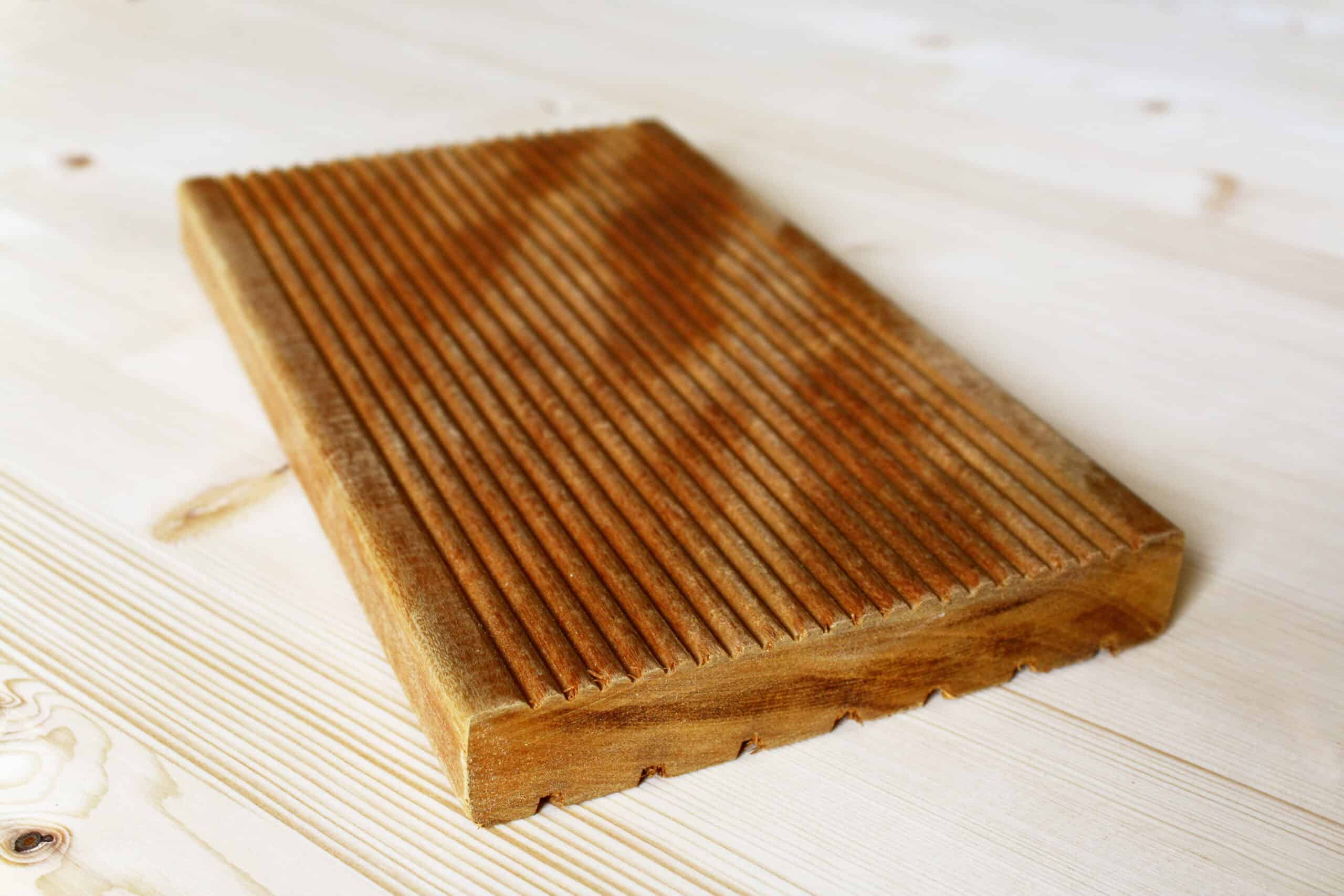
Garapa (Brazilian Ash)
Garapa is a dense hardwood known for its warm golden hues and impressive durability. With a Janka hardness rating of 1,650, Garapa is naturally resistant to decay, insects, and mold, making it a reliable choice for outdoor applications like decking, boardwalks, fencing, and other structures.
Advantages of Garapa
- Naturally Rot- and Insect-resistant – No need for chemical treatments.
- High Density & Strength – More affordable than Ipe but still incredibly durable.
- Consistent Golden Color – Ages to a sophisticated silver-gray if left untreated.
White Oak: Versatile & Classic Hardwood
White Oak is a widely available North American hardwood known for its neutral beige-brown hues and tight grain pattern. While durable, it is less suited for outdoor applications compared to lighter tropical hardwoods. It’s better for indoor flooring and millwork projects.
Advantages of Oak
- Affordable & Accessible – Readily available in North America.
- Classic Look – Complements various design styles.

Honorable Mention: Softwood Southern Yellow Pine
Why mention a softwood in our hardwood species list? Because Southern Yellow Pine is truly a standout, we would be remiss if we didn’t consider it on the list!
For coastal and marine applications, pressure-treated Southern Yellow Pine is a top choice. It resists rot, pests, and water damage and lasts for decades. It’s also a beautiful pale yellow color!
Harbor Exports partners with leading marine lumber brands to supply durable, water-resistant options like Southern Yellow Pine for projects near the sea, like docks and piers, seaside decking, and boardwalks.
Advantages of Yellow Pine
- Protected Against Rot & Pests – Treated with copper azole, MCA, or CCA to repel marine life, mold, and saltwater damage.
- Ground-Contact Certified – Suitable for both land-based and marine construction.
- Long-Lasting Performance – Built to withstand harsh coastal environments.
Why Choose Harbor Exports for Your Hardwood Lumber?
At Harbor Exports, we take pride in supplying premium hardwood lumber to woodworkers, contractors, and businesses worldwide. Here’s why our customers choose us:
- Extensive Selection – We carry a vast inventory of domestic and exotic hardwoods.
- Quality Assurance – Our lumber is kiln-dried and graded to meet industry standards.
- Competitive Pricing – We offer wholesale and bulk pricing to suit all project sizes.
- Global Shipping – Our export network ensures timely delivery anywhere in the world.
- Sustainability Commitment – We prioritize responsible sourcing to protect natural forests.
Start Your Next Project with Harbor Exports
Tell us what, when, and where, and we’ll get it there!
No matter what type of hardwood lumber you need, Harbor Exports is here to provide expert guidance and high-quality materials. Whether you’re working on a luxury resort or a durable home project, our lumber guarantees exceptional performance and longevity. Browse our hardwood collection and supplies online or contact us for more information.
Get the best hardwood lumber for your project—trust Harbor Exports for excellence in every last wood plank!
- About the Author
- Recent Posts
Brad Enfinger has been in construction for over 20 years and has been involved with every material from concrete slab to laying the roof on houses. Brad’s diverse experience has given him the knowledge needed to assist those with shipping building materials, whether it be a house, pole barn, deck, or a dock. Brad at Harbor Exports has anything for your building material needs and can export material all over the world.



